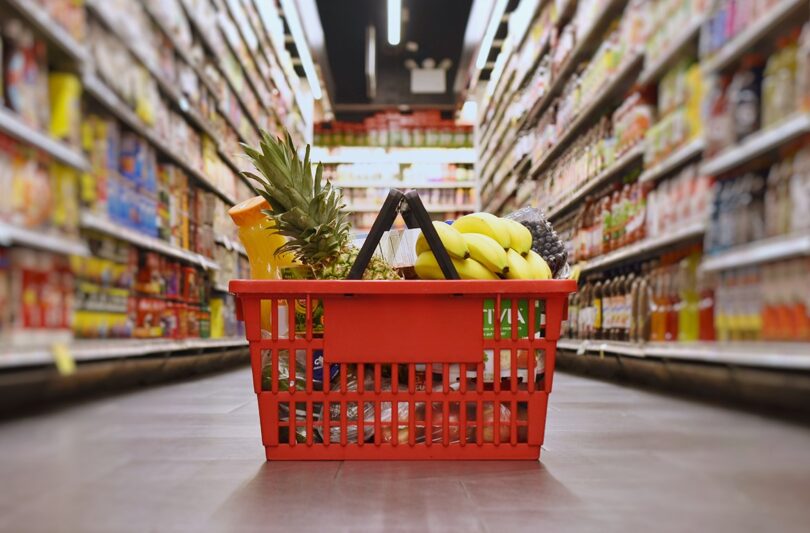If you’ve been grocery shopping recently, you’ve probably noticed a significant increase in your total bill. From fruits and vegetables to meat and dairy products, prices have surged across the board. But why exactly have grocery prices skyrocketed lately? Multiple factors, including global events, supply chain disruptions, and environmental issues, have contributed to these rising costs. In this article, we’ll break down the reasons behind the price surge and offer insights into what may happen next.
1. Supply Chain Disruptions
The global supply chain has been severely impacted by a combination of issues over the past few years. From the COVID-19 pandemic to geopolitical conflicts, the systems that transport goods from farms and factories to grocery store shelves have been disrupted. These interruptions have resulted in higher transportation costs, delayed shipments, and ultimately, increased prices for consumers.
Key Supply Chain Issues:
- Shipping Delays: Ports have experienced congestion, causing delays in the delivery of essential goods, including food products.
- Labor Shortages: The pandemic has caused labor shortages across various sectors, from truck drivers to food processing plants, leading to slower production and higher costs.
- Increased Shipping Costs: Fuel prices have increased significantly, which has driven up the cost of transporting goods.
2. Rising Fuel Prices
Fuel prices have a direct impact on grocery costs. Whether it’s transporting raw materials to production facilities or delivering finished products to stores, transportation is a critical part of the food supply chain. As oil and gas prices rise, the cost of getting groceries to your local store increases, and those expenses are passed down to the consumer.
How Fuel Prices Affect Grocery Costs:
- Transporting Food: Both domestic and imported food items require transportation, and with higher fuel prices, the cost of delivering these goods increases.
- Farming Operations: Farmers use fuel for machinery and equipment, and when fuel prices go up, so do the operational costs of farming. This, in turn, impacts food prices at the grocery store.
3. Extreme Weather and Climate Change
Another significant factor contributing to skyrocketing grocery prices is climate change and extreme weather events. Droughts, floods, and other environmental challenges are affecting food production worldwide. When crops fail or yields decrease, supply falls, and prices rise to meet the demand.
Climate-Related Impacts on Food Prices:
- Droughts: In many regions, prolonged droughts have impacted the availability of water for crops, leading to lower agricultural output.
- Flooding: Excessive rainfall and flooding have damaged crops, especially in low-lying areas, reducing the supply of fruits, vegetables, and grains.
- Unpredictable Weather: Changing weather patterns have also made farming less predictable, causing fluctuations in supply and leading to price volatility.
4. Geopolitical Conflicts
Geopolitical conflicts have a profound effect on food prices, especially when it involves major exporters of essential commodities like wheat, corn, or oil. For example, ongoing conflicts between nations can disrupt global food markets, limiting the availability of key products and leading to price hikes.
Examples of Geopolitical Influence:
- Sanctions and Trade Barriers: Sanctions on key exporters of agricultural products can limit the global supply of food, driving up prices.
- Conflict Zones: When conflicts arise in major agricultural regions, it can reduce exports and disrupt global supply chains, increasing costs for consumers worldwide.
5. Increased Demand for Food Products
As the global population grows and economies recover from the pandemic, the demand for food products has surged. In some countries, there’s a growing demand for meat, dairy, and specialty products, which drives prices up as supply struggles to keep pace.
Factors Increasing Demand:
- Economic Recovery: As economies bounce back post-pandemic, demand for food products has increased, straining supply chains.
- Changing Diets: In some regions, consumers are shifting to diets that require more resource-intensive production, such as increased meat consumption.
6. Inflation and Economic Factors
General inflation is another reason why grocery prices have surged. As inflation increases, the purchasing power of consumers decreases, and prices of goods across all sectors rise. This includes basic food staples, pushing up the cost of essential groceries.
How Inflation Impacts Food Prices:
- Increased Production Costs: Inflation affects everything from labor costs to the price of raw materials, leading to higher costs for food manufacturers.
- Currency Fluctuations: In some cases, the value of a country’s currency can impact the cost of imported goods, making them more expensive for local consumers.
What Can Consumers Do?
While many of the factors behind skyrocketing grocery prices are beyond individual control, there are a few strategies consumers can use to mitigate the impact:
- Buy in Bulk: Purchasing non-perishable items in bulk can help save money in the long run.
- Shop Seasonally: Buying fruits and vegetables that are in season can help reduce costs, as these products are usually more abundant and less expensive.
- Consider Generic Brands: Opting for store-brand products instead of name brands can lead to significant savings.
Conclusion
Grocery prices have skyrocketed due to a combination of factors, including supply chain disruptions, rising fuel costs, climate change, geopolitical conflicts, and increased demand. While these global trends may persist for some time, being informed about the causes can help consumers make smarter decisions at the checkout. As we navigate these challenges, keeping an eye on global events and adjusting our shopping habits can help manage the rising costs of groceries.








